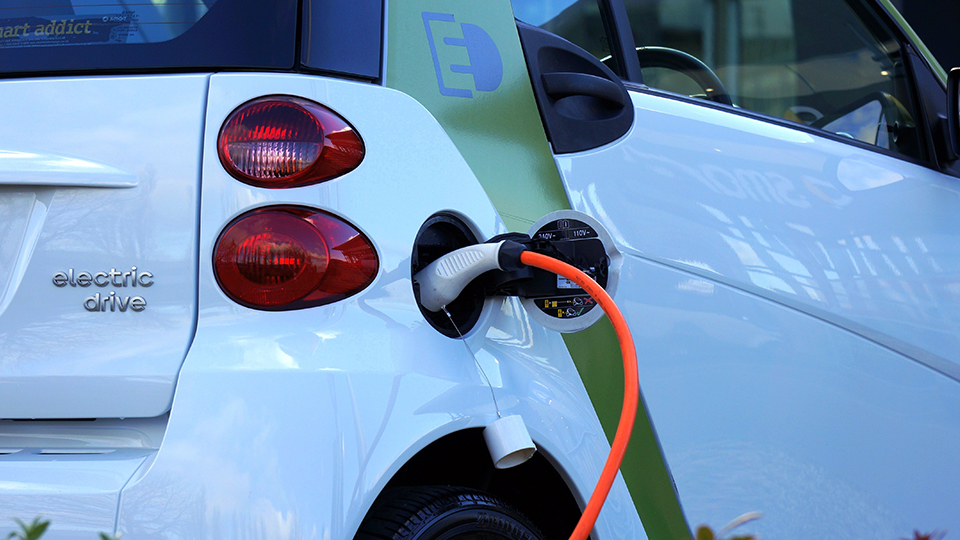EV Product Commission issues first report
Subscriber Benefit
As a subscriber you can listen to articles at work, in the car, or while you work out. Subscribe Now
The Electric Vehicle Product Commission, established in 2021 with the passage of House Bill 1168, has released its first tasking report, Opportunities for the Hoosier Automotive Supply Chain and Talent. In this quarter’s INPower Perspectives, we take a look at an excerpt from the report’s Executive Summary.
The automotive industry in Indiana is a dynamic, dense, and connective pulse of innovation rooted in generations of Hoosiers. Anchored by research, education, and training from world-class universities and colleges, the automotive industry’s strength lies in its greatest tradition: modernization.
Disruption = Opportunities
The next generation of public-private partnerships has been built to accelerate Indiana’s status as a global innovation hub. Powered by a collaboration of civic leaders representing the State of Indiana, the Indiana Economic Development Corporation, manufacturers, and educational institutions, the Electric Vehicle Production (EVP) Commission is working to supercharge the automotive industry by bolstering and connecting local innovation assets, attracting innovative companies, and creating talent pathways to ensure all workers can benefit from the innovations.
The Automotive Industry initiated the beginning of a technical revolution in Indiana by cultivating research and pioneering products over the course of many decades. Although the local automotive industry boom has grown immensely recently, Hoosier leaders have been developing the culture of innovation tediously with substantial attention to detail and rising trends. Since 1909, Indiana has grown its automotive manufacturing operations to 13 facilities, 32,600 careers, and more than 24 million square feet of facility space. Additionally, $1.1 Billion in total state tax revenue is generated by the automotive industry. The momentum of investment and growth in the automotive industry has only kept growing, with one of the most recent notable investments being the U.S. semiconductor manufacturer SkyWater Technology Inc.’s plans to invest $1.8 billion for a chip research and production facility in Indiana, in partnership with the state and Purdue University.
The Importance of Electric Vehicles to Economic Development
Like any transformative new technology, electric vehicles create a variety of potent economic development challenges and opportunities. While the electric vehicle market is still developing, it is poised to reshape industries and communities all over the world. World-class research and development, as well as a variety of partnerships and talented individuals, work together to make Indiana the perfect environment for emerging industries like the electric vehicle production industry.
The automotive industry is in the midst of a transition – replacing the Internal Combustion (ICE) engine-based cars with a new energy source – battery-powered Electric Vehicles (EV). Based on research from the EVP Commission, the possible U.S. market size for EVs goes from 1.45 million to 6 million vehicles by 2030, a significant opportunity, albeit highly variable, and a function of automaker choices. This shift from ICE to EV is forecasted to have a corresponding decrease in the volumes of ICE and will impact the automotive industry supply chain. The Hoosier Automotive Industry has all of the needed elements to thrive. In a world that is seeking definition, certainty, and a network, the EVP Commission has a clear vision for its
future, unified and bold leadership, and a connected partnership. As the world demands ever-greater sources of skilled workers and investment opportunities, Indiana has its remarkable talent and speed-to-market way of doing business. As battery manufacturers and startups have announced the construction of more than 80 new gigafactories across the globe to produce lithium-ion cells and batteries, many more will be needed over the next decade.
There is no question that it is critical for automotive manufacturers (OEMs) to develop multiple supply relationships and partnerships with battery specialists. The mobilization efforts to electrification will inevitably bring disruption to many parts of the supply chain. Historically for OEMs, developing and producing ICE powertrains have been part of how brands differentiate themselves. The eventual phasing out of ICE parts significantly disrupts many manufacturing and engineering jobs. As EV powertrains have fewer components, many existing suppliers will be forced to shift their production to align with market needs. But electrification, and especially the battery supply chain, represent one of the most significant growth opportunities across the automotive industry. The new manufacturing ecosystem, supply paradigms, and business connections will play a large role in defining the next generation of the automotive value chain.
Opportunities
The opportunities and challenges with the complex shift from ICE to EV are interconnected. Many of the jobs that will be created in the next five to 10 years do not exist today. Additionally, of the existing jobs that will remain, most will be altered in some way by the new technology. The challenge is to identify which blend of global trends and Indiana assets will offer the right platform to amplify the industry of the future. Furthermore, Indiana’s current top production occupations are at extremely high risk for impact. Adding to that, across the nation, more people are expected to retire than enter the workforce over the next 10 years. The ingredients of these obstacles are interrelated, therefore the solution must be comprehensive and systematic.
The members of the Electric Vehicle Product Commission include:
- David Dukes, Stellantis
- Mike Maten, GM
- Danny Ernstes, UAW
- Paul Mitchell, Energy Systems Network
- Ben Wrightsman, Battery Innovation Center
- Craig Kelle, Toyota
- Rep. Mike Karickhoff, State Representative
- Rep. Carey Hamilton, State Representative
- Sen. J.D. Ford, State Senator
- Sen. Jim Buck, State Senator
You can view the full report by clicking here.
